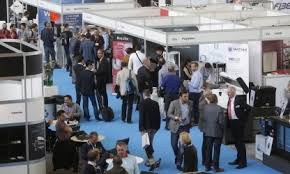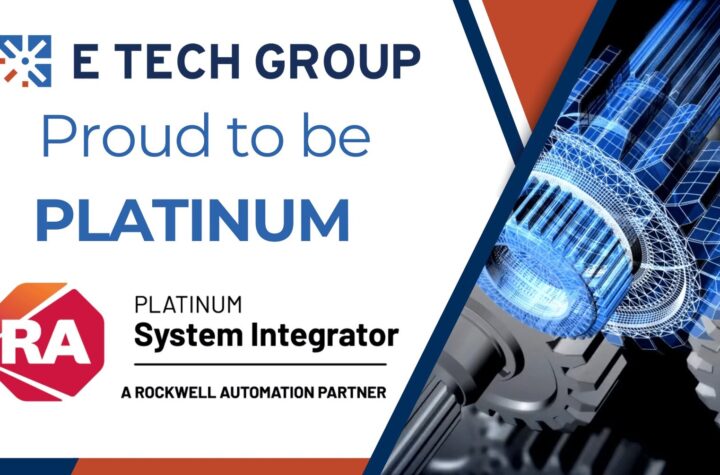
Additive manufacturing has advanced from being an exciting and revolutionary niche technology to one where it offers real world applications that can change the world – and not just in the future, but right now.
innovation
That is the message from the success of the first Additive Manufacturing Europe expo, which was held in Amsterdam in June 2016. Organized by the Tarsus Group in association with the 3D Printing Association it attracted 2,371 visitors from 58 countries. The expo focused on the fastest growing vertical sectors – healthcare, aerospace and automotive. The conference program, sponsored by SmarTech Markets Publishing, was split into the same sectors. Visitors to the show represented leading companies such as BMW, KLM, Philips, Stryker, Rolls- Royce, Airbus, Boeing, Unilever, Adidas, Alstom, BIC, Canon, Deloitte, Konica Minolta, Médecins sans Frontières, NATO and the NHS.
The next event is the first Americas edition of the 3D printing show, which will be held in Pasadena, California from the 6-8th of December 2017, after being postponed from December 2016. Additive Manufacturing Americas 2017 has already attracted a number of companies from the automotive, aerospace, healthcare and other industries, according to the organizer Tarsus. The company says it chose Pasadena because California is ranked #1 in the United States for manufacturing output, and is at the center of international biotech developments.
Automotive Industries (AI) asked Michael Hatton, Marketing Director at Tarsus Group, why the Additive Manufacturing Americas event was postponed.
Hatton: Postponing Additive Manufacturing Americas was not an easy decision, as we had received lots of interest following the successful launch of Additive Manufacturing Europe. However, as it was so close to the first Europe edition some of the interested majors indicated that this would force them to defer that interest to 2017. We therefore decided it would be in the best interest of all to delay Additive Manufacturing Americas by 12 months.
AI: What response have you had from exhibitors in the United States and other countries in the region to your inaugural show?
Hatton: The companies we spoke to welcomed the news with enthusiasm. These are exciting times for this forward-looking sector and we wanted to create something different. Additive Manufacturing Americas is the perfect place to introduce new products. We aim to attract trade visitors from all across the industry and the region – from designers and innovators through to manufacturers and engineers. What makes our additive manufacturing expo different from 3D printing shows is that we focus on giving our exhibitors and visitors a much deeper reach into the international community and real-life manufacturing applications. AI: Going by the success of the Additive Manufacturing Europe, what kind of response do you expect for the second edition?
Hatton: As last June was our launch edition, we had reasonable expectations. No-one knew us. No-one knew what to expect, but everyone was curious to see what the show was about. Of course, we worked hard with plenty of media and associations from all over Europe, and that helped to promote the show to the whole of the continent.
We had some very high-end visitors, looking for cutting edge technology – a lot of serious business was done at the show. Thanks to the quality of our exhibitors and the conference sessions, the show covered really neatly all aspects of the additive manufacturing / 3D printing ecosystem, with a rich, focused content.
We anticipate the first edition of Additive Manufacturing Americas to be larger, busier and really buzzing. We have more time to market the show to visitors, more time to engage them with the show content and more time to include a wider range of exhibitors too. The additive manufacturing / 3D printing market never ceases to surprise, so we hope that the show will reflect this in 2017.
Additive Manufacturing Americas 2017 is a really good opportunity to show off newly launched products. The conference sessions and the Product Stage will once again provide an invaluable opportunity to share the latest innovations and viewpoints with such engaged audiences. Ultimately, Additive Manufacturing Americas should be seen and recognized as the only pan-American trade show of its kind. It will form a key part of our engagement with the industry over the coming years.
AI: How important is the show for sectors such as the automotive industry?
Hatton: The automotive industry highlights the current capabilities of a broad spectrum of additive technologies for the whole product development process, which includes prototyping, tooling and production. Additive manufacturing joins the dots across the ecosystem, providing opportunities for streamlining enterprise-wide processes and communication, while providing opportunities to consider the entire supply chain optimization.
AI: How do you think disruptive manufacturing technologies will change the way cars are built in the future?
Hatton: Manufacturing technologies, such as additive manufacturing, will continue to improve time-to-market, but will also allow for more customization, not just for color, but for part specifications as well. Additive manufacturing facilitates optimization of the entire supply chain and has huge opportunities for after-sales, such as spare parts from digital archives being one of them.
AI: What are the benefits of additive manufacturing or 3D printing for OEMs?
Hatton: The benefits of additive manufacturing remain the same as they have always been — time and cost savings. However, these can now be found right through the product development process, not just in concept development, and they add up when additive manufacturing is used holistically throughout the organization not just in design, and not just for form/fit prototypes. In the instance of complex structures, additive manufacturing can minimize weight and assemblies. Both of these have huge implications, but require targeted application development.
AI: How do you see the additive manufacturing sector growing over the next five years and how do you see your exhibitions – both in Europe and in the United States, evolving?
Hatton: The trend in the additive manufacturing sector continue is to focus on manufacturing applications. There is a huge growth potential in the automotive, medical and aerospace markets, especially as partnerships and collaborations continue to multiply. We forecast more new entrants in the market as plastics and metals patents expire. Our exhibitions are set to grow alongside the industry itself, by providing a solid platform to see many competitive and complementary technologies in one place. It will become more important than ever!














More Stories
Celanese Materials Shine in Multiple Category Winners at 2024 SPE Automotive Innovation Awards
New future-ready single-slot PXIe controller for high-performance T&M applications from Pickering Interfaces
US Army Awards ANELLO Photonics Contract Phase II SBIR Topic “xTech Search 7 SBIR Finalist Open Topic Competition”